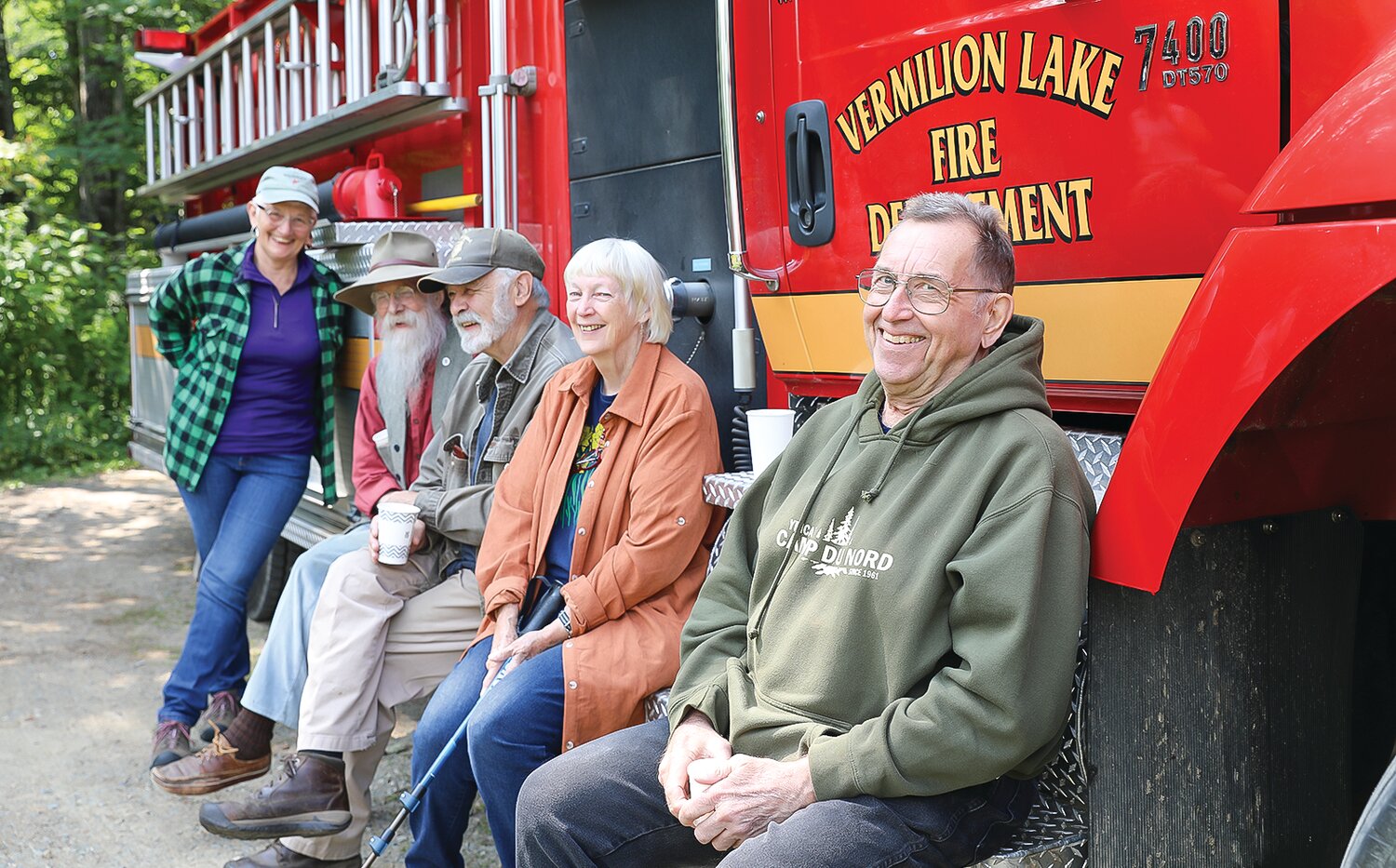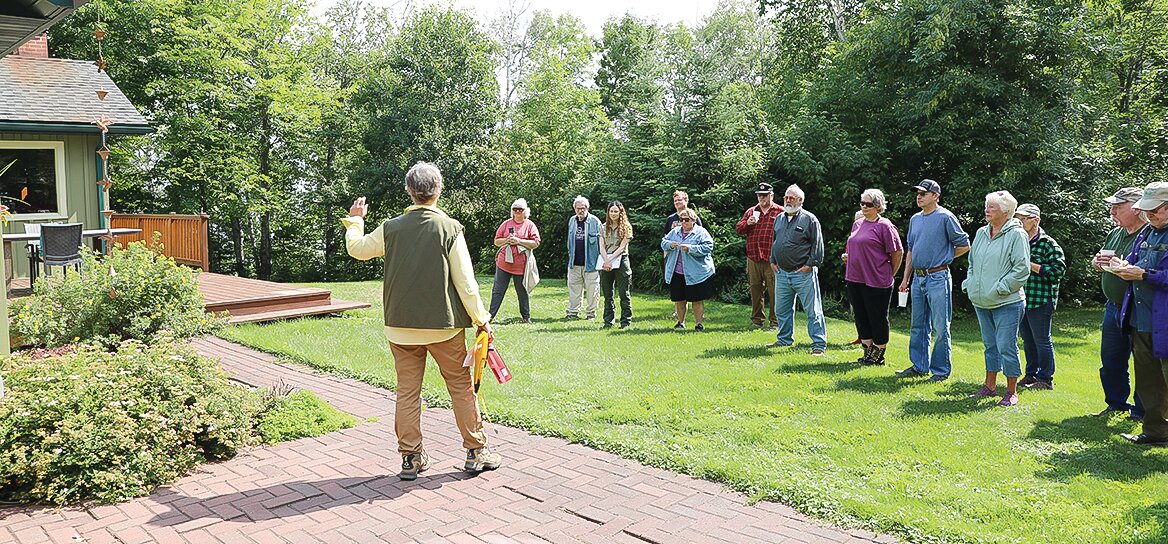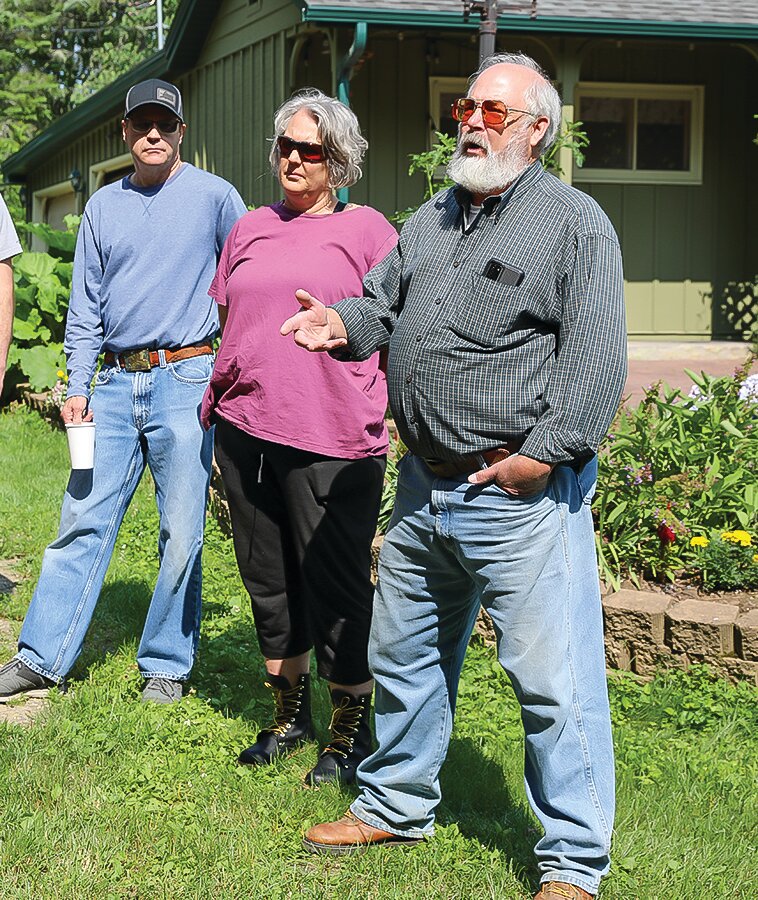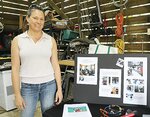Support the Timberjay by making a donation.
LEARNING TO LIVE WITH FIRE
Area residents learn steps to take to reduce the risk from wildfire
VERMILION LAKE TWP- Living with and managing the risk of wildfire was the focus of an event held here earlier this month. “I’ve learned that there is risk here,” said Gloria …
This item is available in full to subscribers.
Attention subscribers
To continue reading, you will need to either log in to your subscriber account, or purchase a new subscription.
If you are a current print subscriber, you can set up a free website account and connect your subscription to it by clicking here.
If you are a digital subscriber with an active, online-only subscription then you already have an account here. Just reset your password if you've not yet logged in to your account on this new site.
Otherwise, click here to view your options for subscribing.
Please log in to continue |
LEARNING TO LIVE WITH FIRE
Area residents learn steps to take to reduce the risk from wildfire
VERMILION LAKE TWP- Living with and managing the risk of wildfire was the focus of an event held here earlier this month. “I’ve learned that there is risk here,” said Gloria Erickson, Fire Adapted Communities Project Coordinator for St. Louis County.
While fire brings hazards, it plays an important role in the forests of the North Country, Erickson noted during the event, held July 8 at the home of Aaron Kania and Roxanne Tea on Lake Vermilion’s Pike Bay. “Fire is a good thing,” said Gloria Erickson, “The land here is dependent on fire.”
Those living in these forests do need to understand the risks of uncontrolled forest fires, said Erickson. “As a landowner, we need to have a responsibility to forest stewardship,” she said. “We need to be more resilient.”
That idea has been catching on in recent years, as wildfire in the region has become more common and often more devastating than in the past. When homeowners take steps to better adapt their property to the risks posed by wildfire, it improves their odds of saving their lives and property and makes the job of firefighters easier at the same time. Erickson noted that when conditions are bad, firefighters are often battling fires at multiple scenes.
“Wildland fires are weather-related events,” said Vermilion Lake Fire Chief Steve Lotz. “A bad fire day here is also a bad fire day all around our region.”
The danger posed by a wildfire is determined by three main factors, Erickson explained— weather, topography, and fuel.
“While we don’t have control over drought and wind, or the general topography of the area, we do have control over the fuel around your home,” she said.
The first issue addressed was access, as in making your driveway fire truck friendly. That starts with making your fire sign readily visible from the road. The driveway at the Kania-Tea home was wide enough to easily fit the Vermilion Lake Fire Department’s main fire engine, and the driveway ended in a loop, meaning emergency vehicles could easily get in and out. Fire trucks and ambulances need a driveway at least 12 feet wide and need top clearance of 14 feet. Longer driveways, over 150 feet, should be widened to 20 feet.
Lotz explained that area fire departments are not eager to drive their trucks up driveways where the truck can get stuck or damaged, and often will park on the main road and scout out the driveway first, meaning it will take longer for the firefighters to be on scene actually fighting the fire. And longer driveways should have an area where emergency vehicles can safely turn around.
Embers
Wildfires spread mostly through airborne embers.
“It was a real aha moment when I realized it wasn’t a wall of fire to be scared of,” said Erickson, “but it was the embers.”
Surface fires travel along the ground and then can travel upwards into the canopy of trees.
But a bigger danger can be embers, which can travel over a mile ahead of a fire front, and if they fall onto combustible items, they’ll start new fires.
There are many no-cost things homeowners can do to reduce the risk of wildland fires damaging their property. These are as simple as cleaning roofs and gutters of dead pine needles and leaves, stacking firewood away from the home (and not on the deck or below the deck), pruning branches of nearby trees up to six feet in height (may help stop surface fires from traveling up into the tree canopy), reducing the density of brush in nearby woods, and keeping grass around the home short and watered.
Erickson talked about using fire-resistant building materials whenever possible, making sure wood exteriors are smooth and well-caulked, so that embers can’t start splintered wood on fire or get sucked into a home around vents or windows. Vents should be covered with 1/8-inch metal screens.
Embers can start fires not only in pine needles in gutters or on the roof, but they can also alight on window boxes, plastic porch furniture or porch cushions and reignite.
“In case a fire is near, quickly move these away from the house,” Erickson said.
Decks, if possible, should have metal flashing between the deck boards and the wall of the house. Thicker deck boards are more fire-resistant.
Large picture windows will conduct the heat of a fire inside a house and can actually start fires indoors. Tempered glass, and double- or triple-pane windows are safest, she said.
If your drapes are not flame-resistant, remove them in case a fire is near and you are told to evacuate your home (if there is time).
Reducing fuel loads
Pruning and trimming brush and lower branches in a 30 to 100 ft. radius around your home reduces the risk of your home catching fire, and makes your property easier for firefighters to defend in case of a fire. There should be a 10-foot-wide space around any propane tanks, and tanks should be at least 10 feet from buildings.
Any firewood stored close to a home should be moved away from the structure at the end of winter.
Neighbors helping neighbors
Kania and Tea are part of a group of friends whose properties range from five to 20 acres. They work together to reduce fuel loads on their properties. The group includes four couples, and two teenagers, who work to assess the properties for wildfire resiliency, create a management plan for each property, and then work together to clear brush, burn piles (in the winter), and haul brush away as needed. The group’s goal for this year to help others form their own cooperative groups, and to share the practical knowledge they have gained. To learn more about the “One More Tree Fire Coop” contact Thea Sheldon at thea@theasheldon.com or call 218-235-7699.
Northland Alert system
St. Louis County Emergency Manager Planner Josh Brinkman talked about the importance of signing up for the Northland Alert system, which can alert county residents in case of emergencies, such as wildland fire.
The easiest way to access it is through northlandalert.com.
Signing up through northlandalert.com will forward the user to a webpage hosted by the city of Duluth. Hitting the subscribe button on this webpage will take you to the sign-up forms for the entire county and the partner cities.
The subscription process sends you to three forms: one for your identity, so the system knows where you are located for regional alerts; one for your email, text and phone contact information, and how you want your alerts delivered; and one for which alerts you wish to receive. The last form also allows you to set a quiet time of your own choosing for those who want alerts muted during sleeping hours. All the information on the site is confidential and not shared outside of public safety agencies sending alerts. Once a user sets up an account, it is easy to sign back in to change alert choices or delete an account. There is no charge for the alert system. The alerts will also include weather-related advisories.
More information
For more information on the Firewise program, contact Gloria Erickson at 218-365-0878 or gloria@dovetailinc.org.
More resources are also available at www.firewise.org.
Josh Hasbrook, from Vermilion Tree Service, was also part of the event. His company can help with planning and removal of brush and trees to make a property safer from wildfire. He can be contacted at 218-780-1572.













